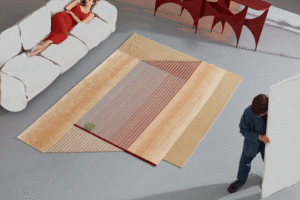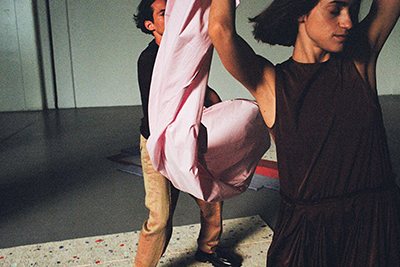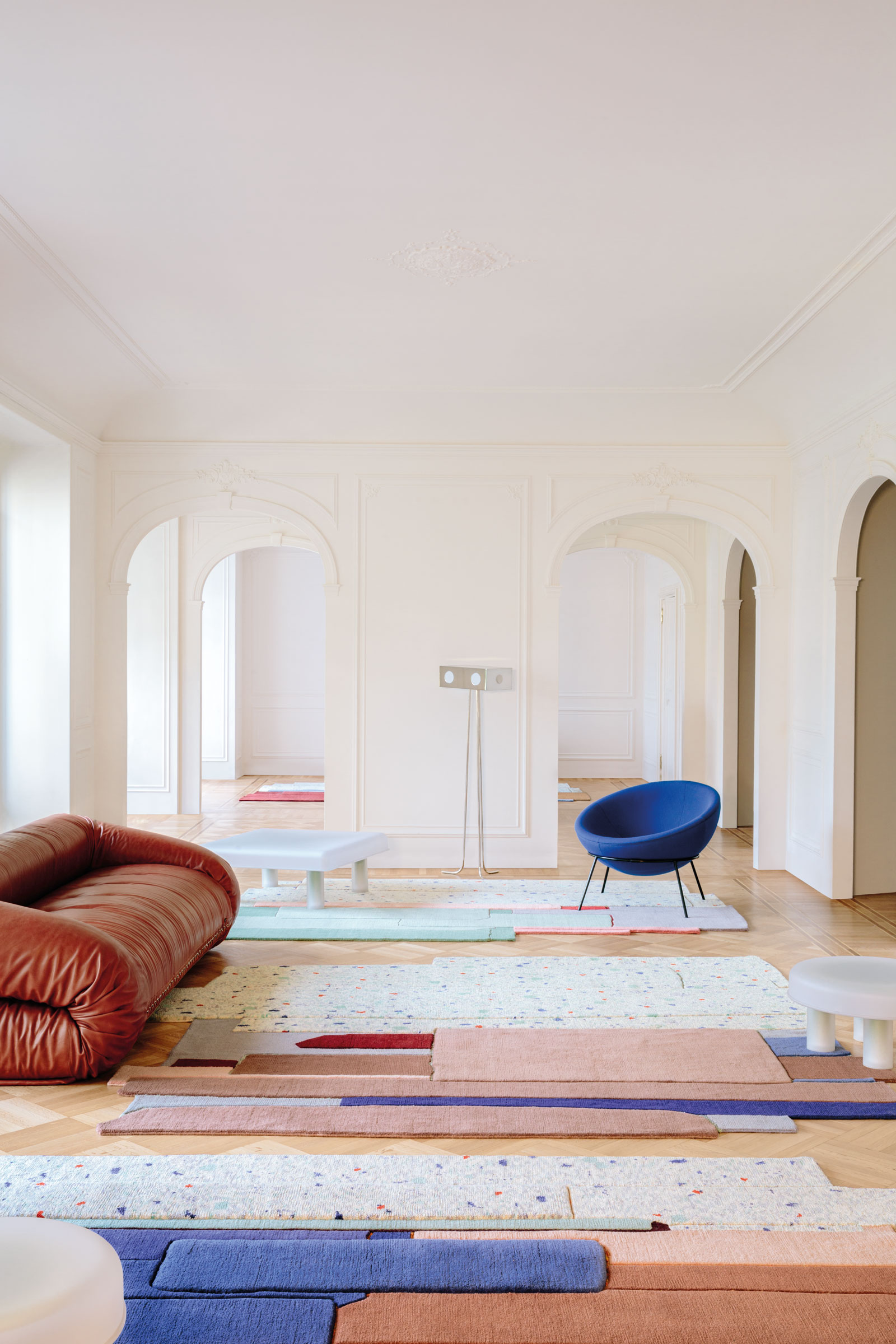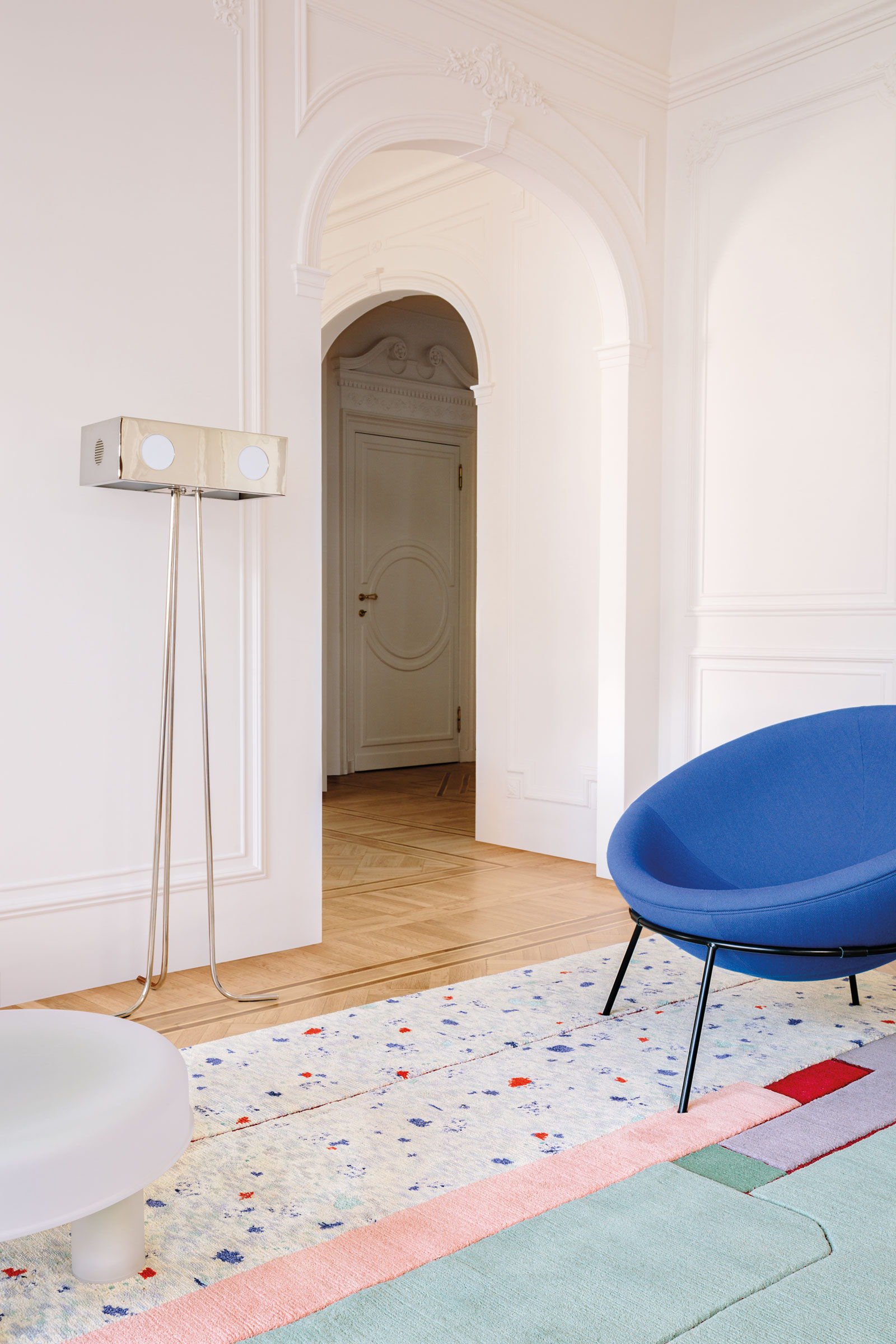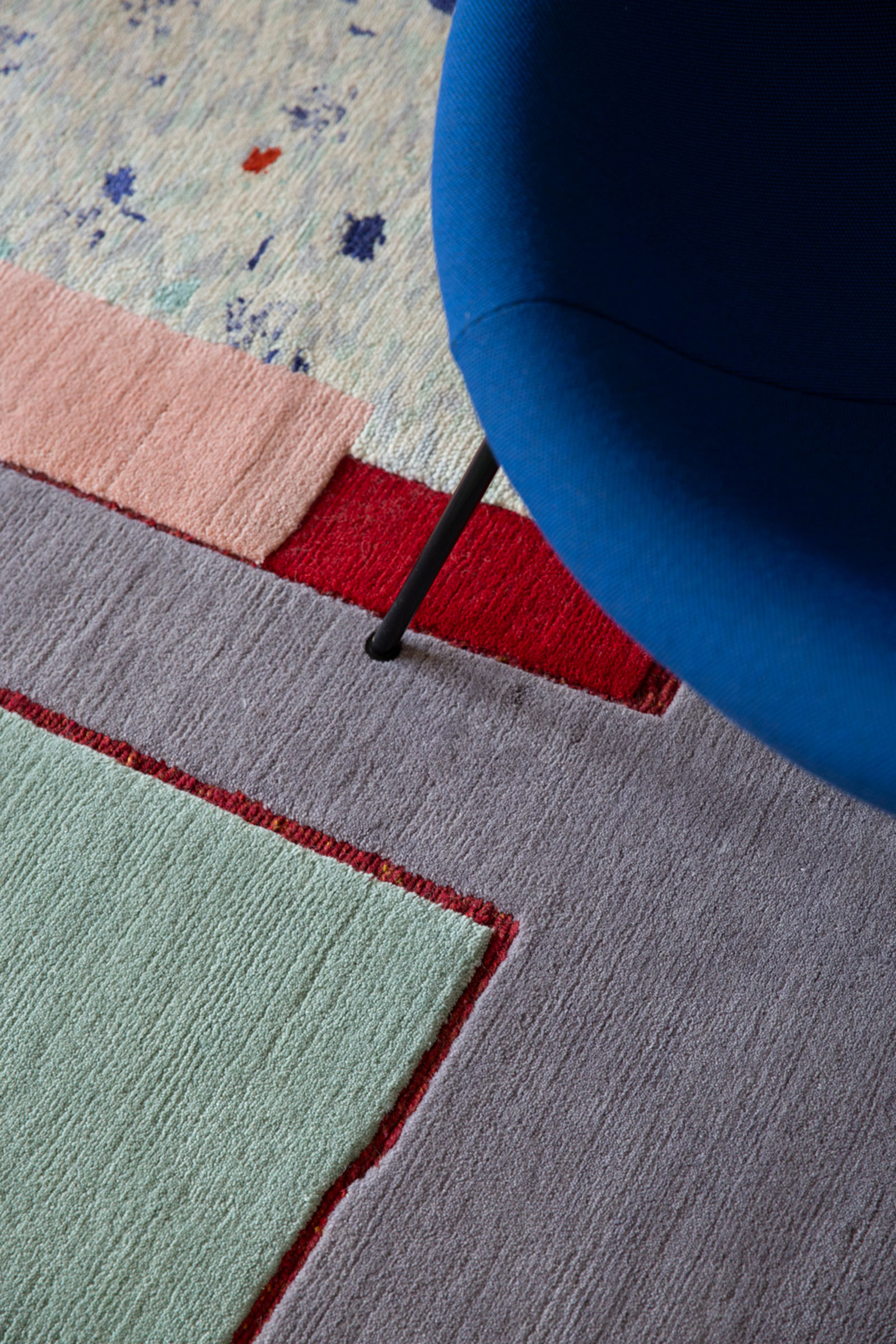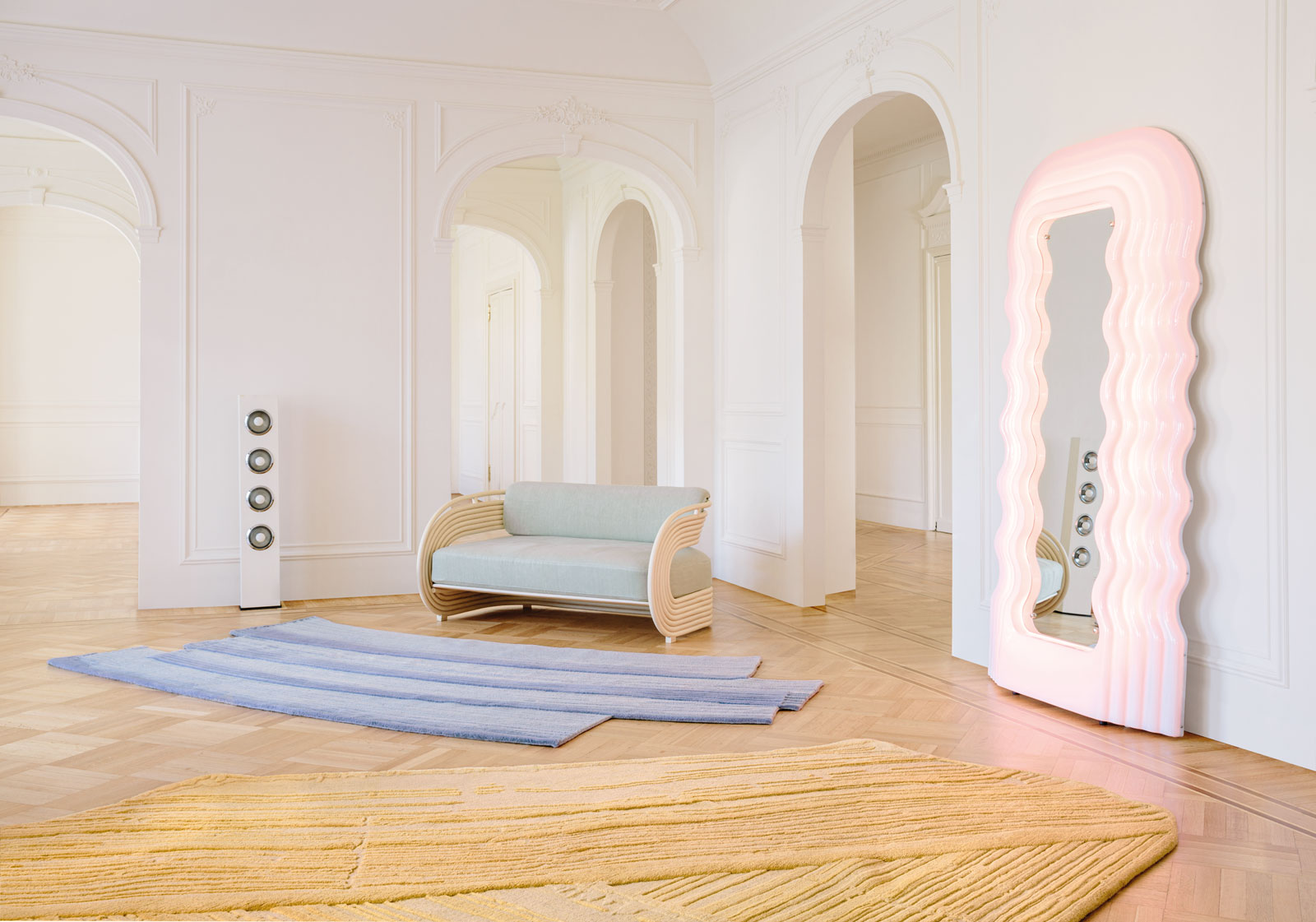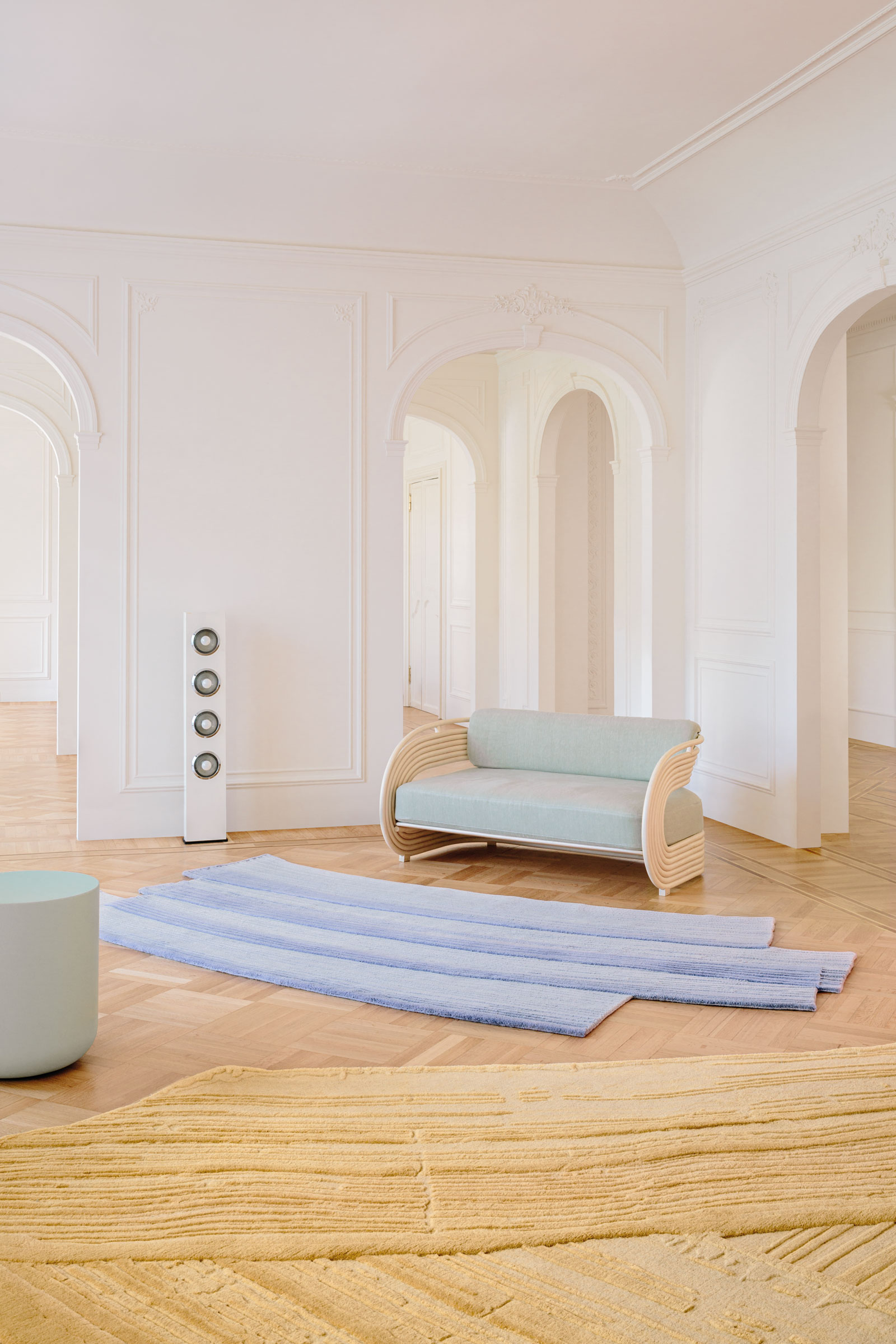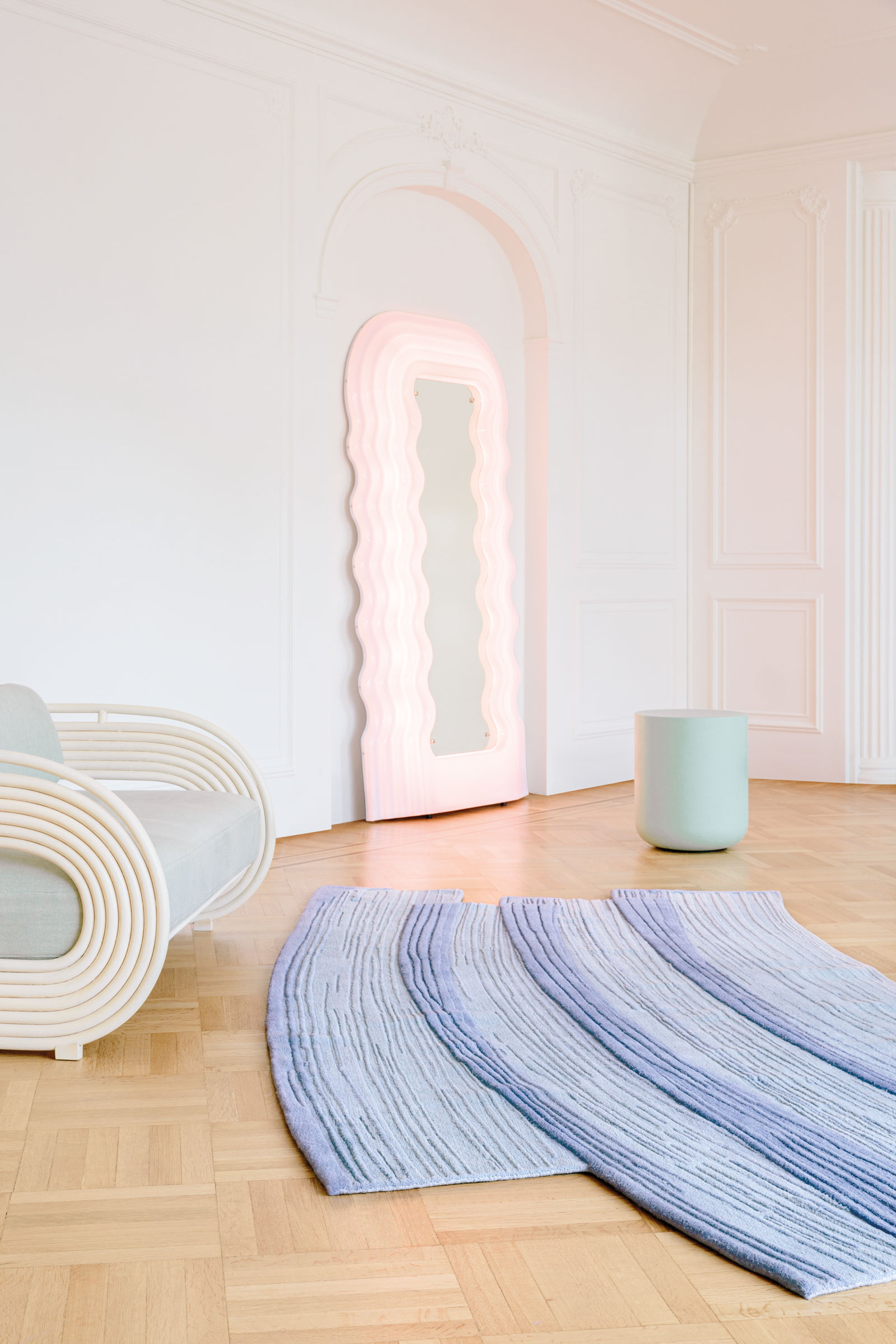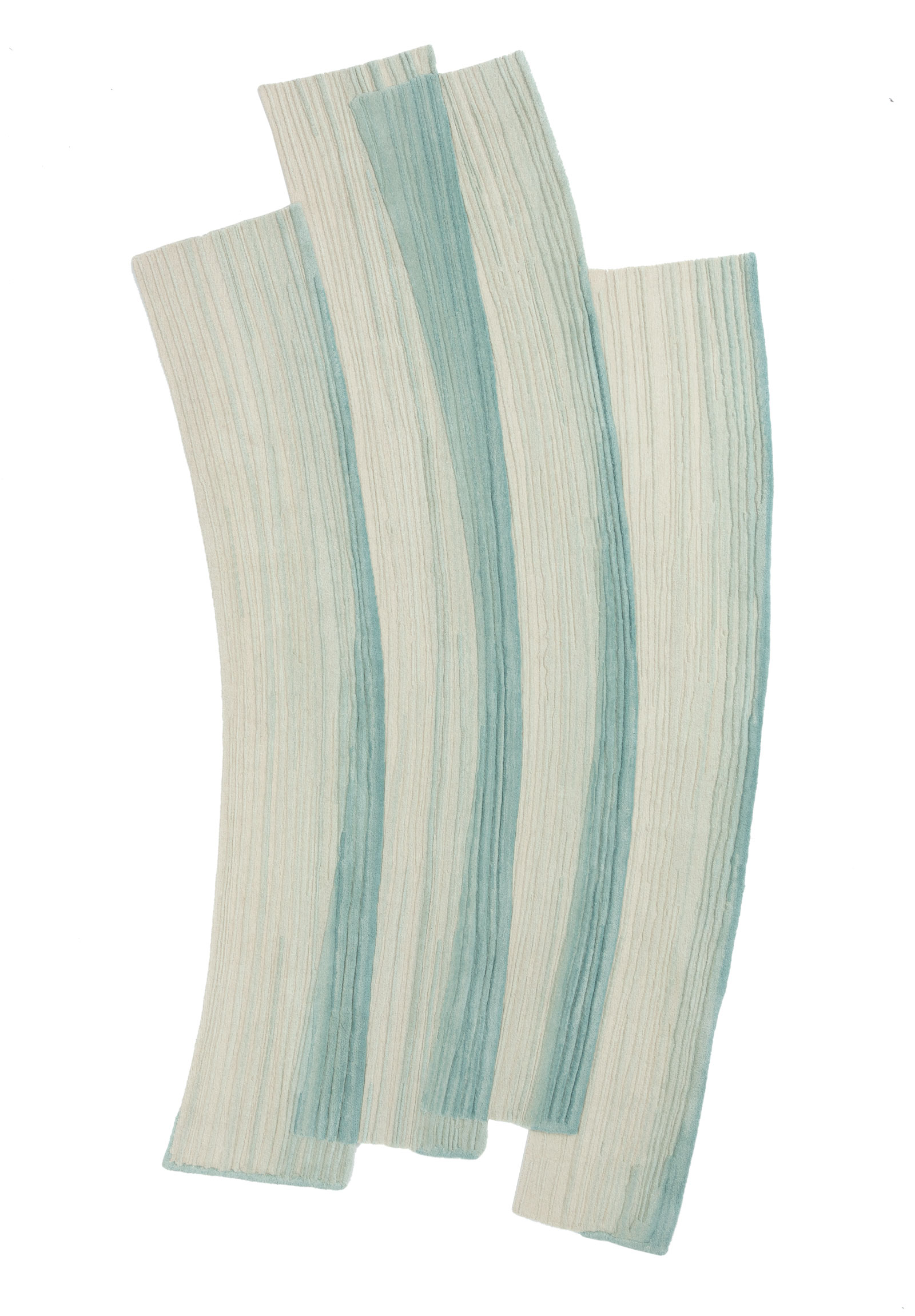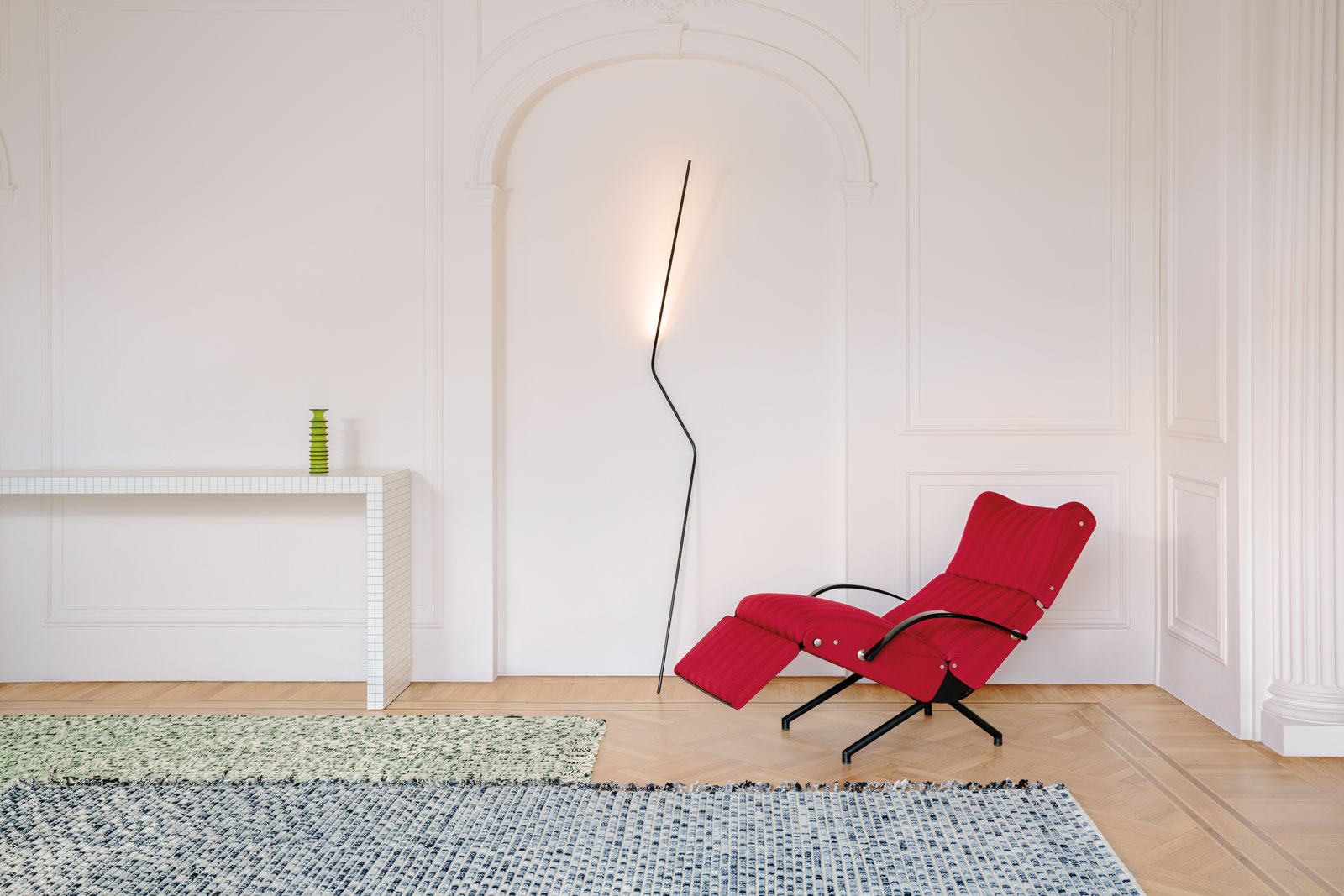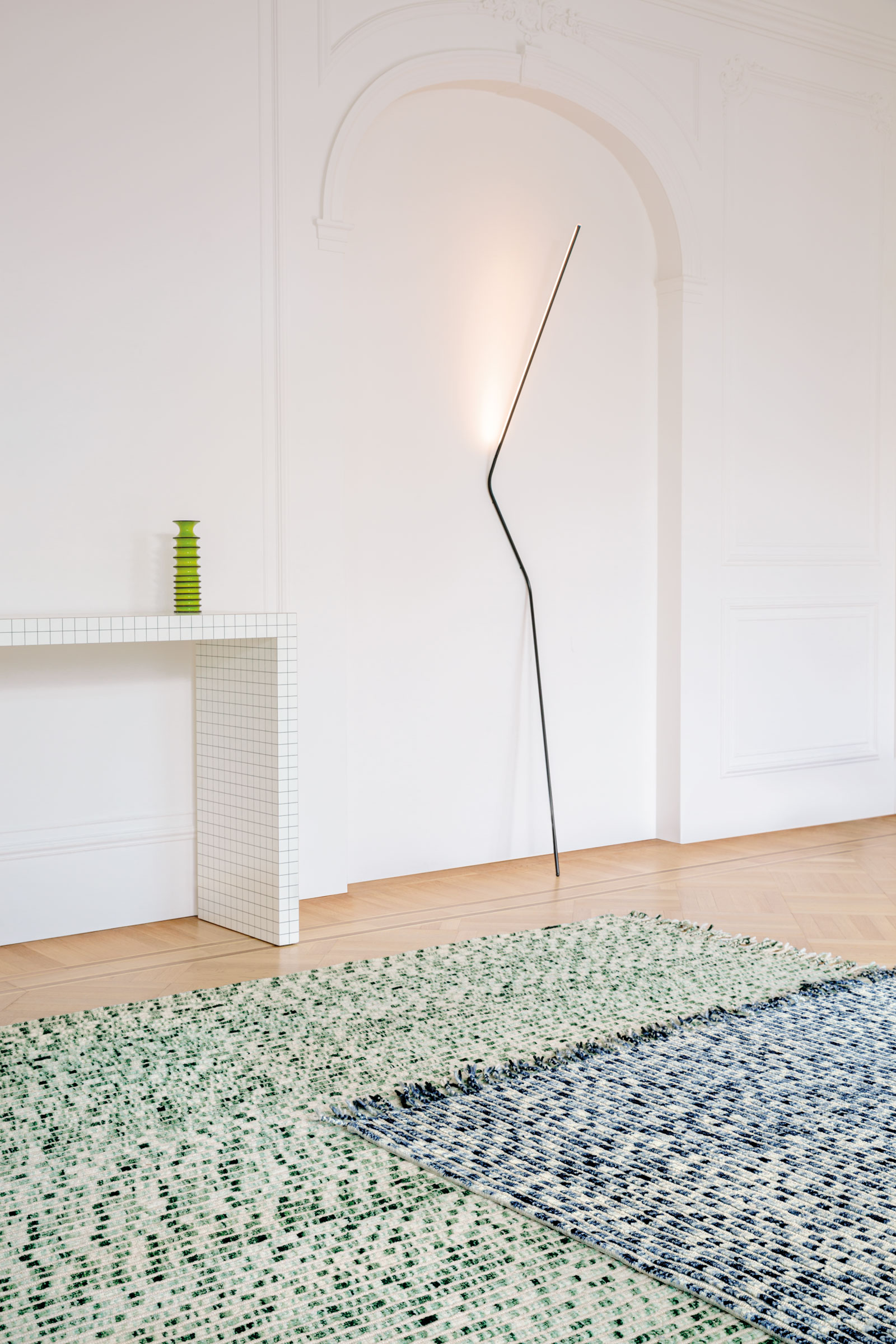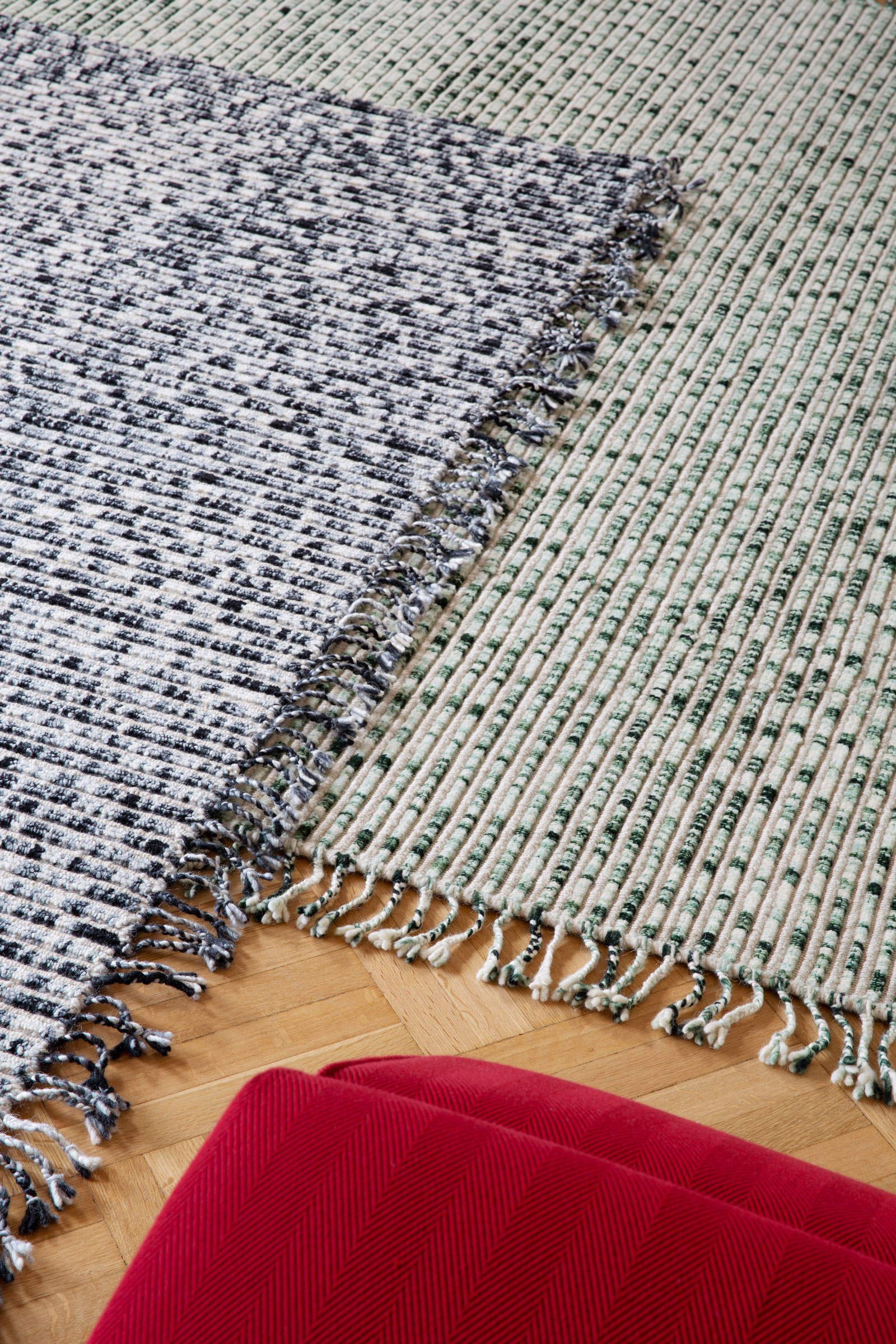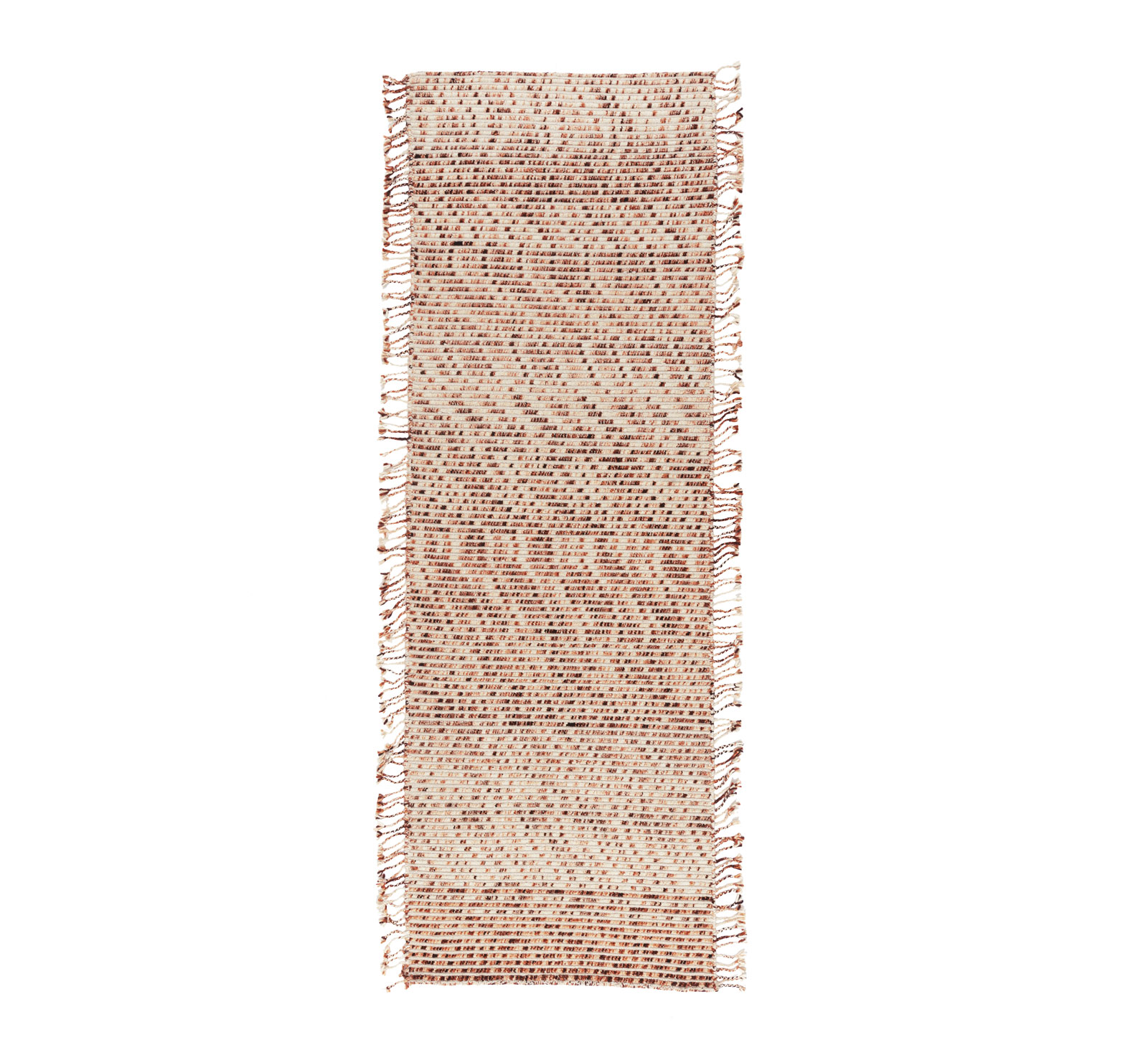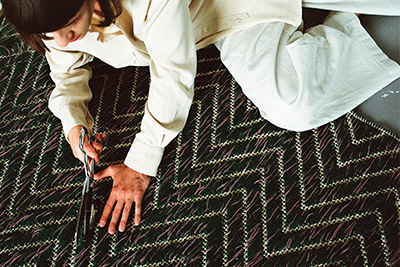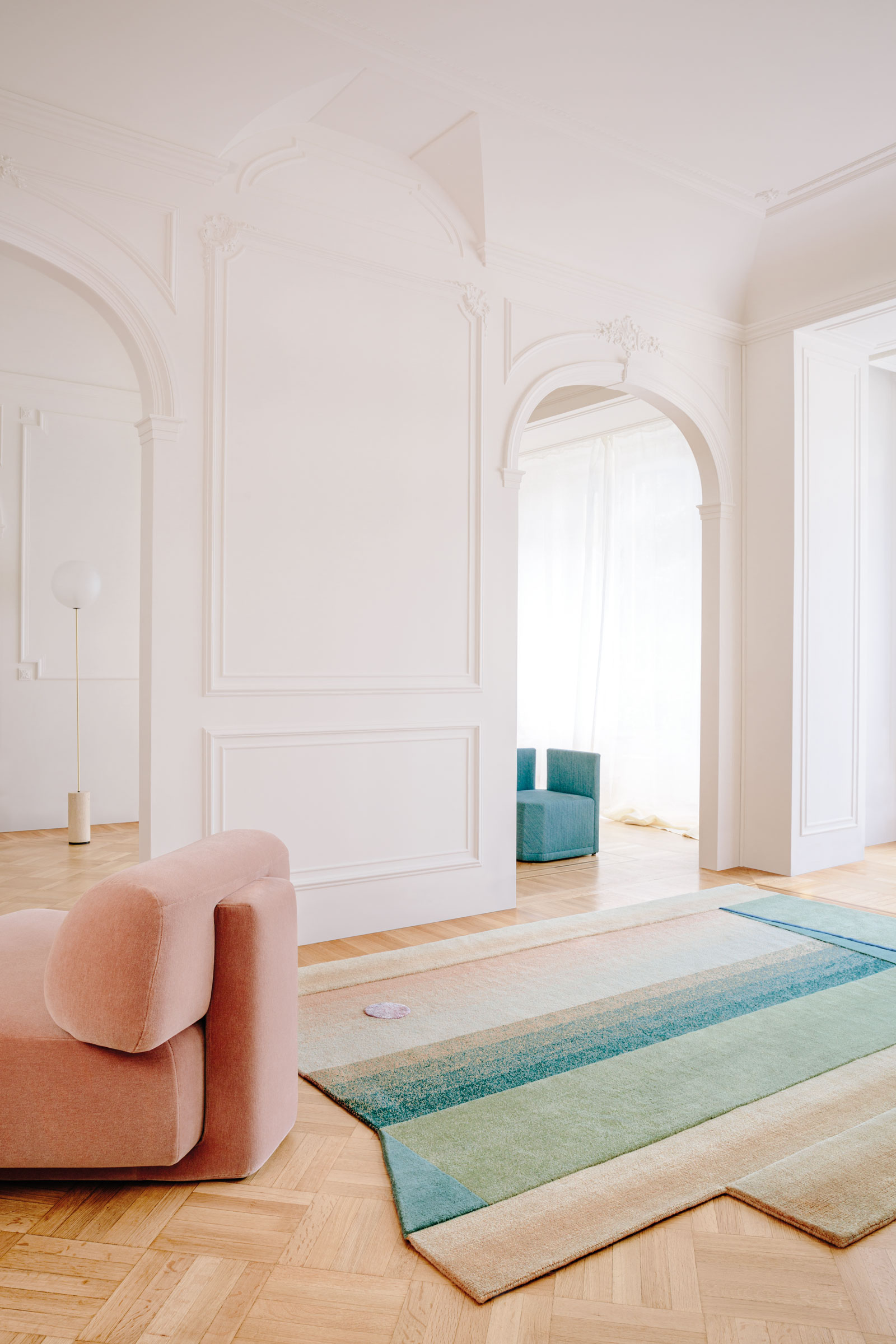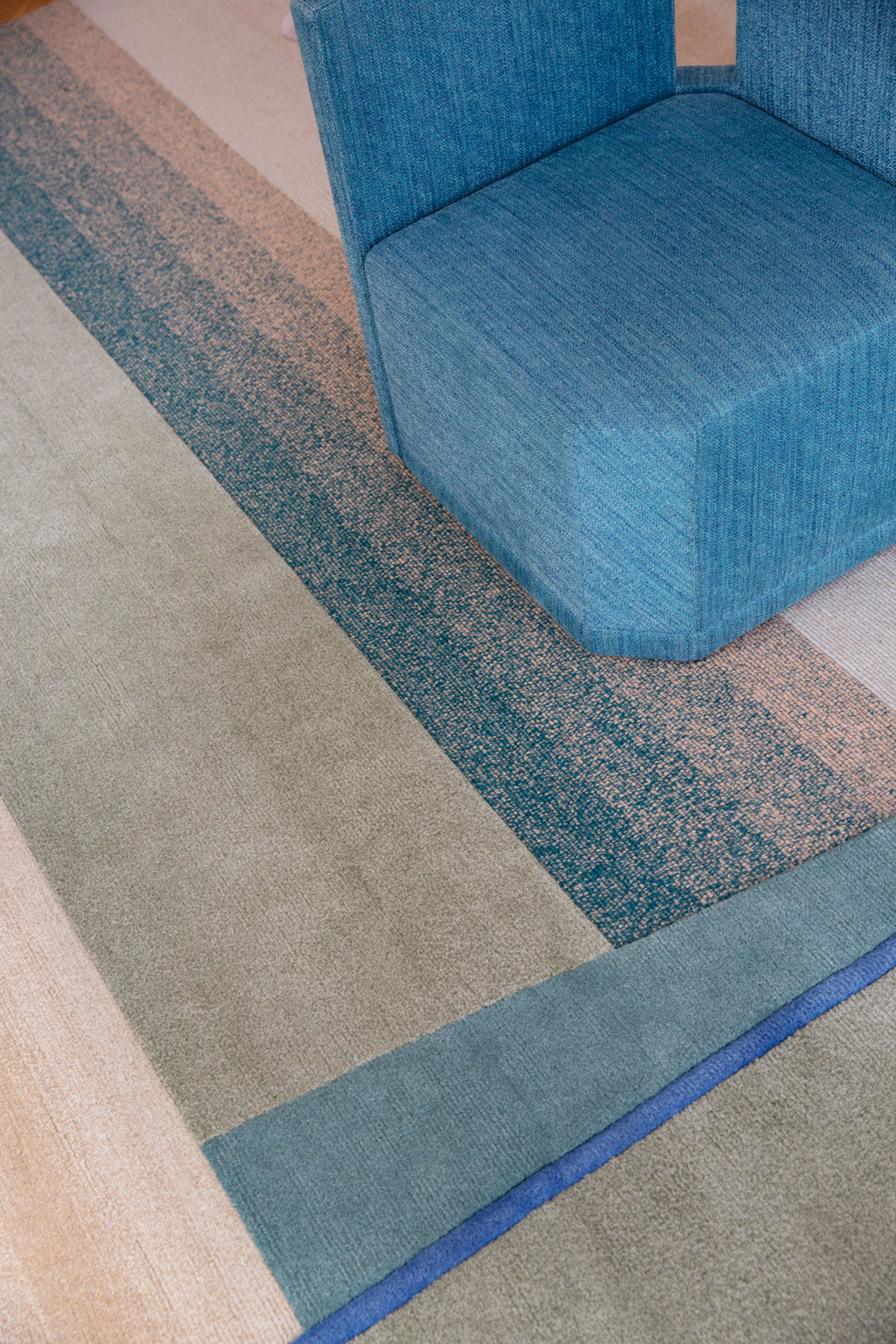Gesture Collection
-
01 patcha
The “Patcha” performance is a homage to a collaborative, almost meditative, domestic routine – folding laundry. The four performers are observed whilst folding colorful bedsheets, layering them to form a vivid and multicolored pile. The overlapping of layers is the very concept behind Patricia Urquiola’s “Patcha” rugs which are the result of a spontaneous handcrafted creation.Patricia Urquiola is a Spanish born, Milan based architect and designer. She has worked with cc-tapis since 2016 when her Visioni rugs were presented at the Salone del Mobile. She is one of the world’s most influential creatives and has designed the new Patcha Collection for the Gesture Collective.For the Patcha rugs Patricia Urquiola explores the concept of “gesture” in all ways, not only aesthetically. She asks the question “why not talk about upcycling as a gesture?” As in her Fordite rugs presented in 2019, she has pushed for a change in mentality, of moving common habits and creative energy in the direction of sustainability. Patricia Urquiola gives new life to Himalayan wool as she reuses it in the design of Patcha, creating the speckled graphic texture present in the rugs.
The rugs were born from the idea of overlapping, the hand-crafted idea of putting together different patches in a playful collage. Patricia Urquiola skillfully created compositions with discarded paper and cardboard, playing on the idea spontaneity. The result is a combination of woolen fragments that resemble jagged papers and colorful cardboard, assembled in an extemporized collage. A special dyeing technique was used to create the random colors on the wool, emphasizing the concept of experimentation. The graphic lines of the rugs are made out of recycled silk, obtained from Indian Sari vests. The borders of the rugs are irregular, giving the impression of a design that is always in-progress.
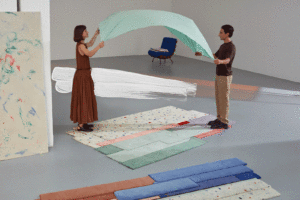
-
02 stroke
The “Stroke” performance is an unconventional representation of painting, disguised under a common household activity: cleaning glass. Acting this out, with extraordinary artistic emphasis, the performer emulates the artistic gesture of drawing using a sponge as a replacement for a paint-brush. The designer of the rugs Sabine Marcelis considers every surface as a temporary canvas: strokes, wipes, and brushes in a domestic space serve as the inspiration of the new collection.Sabine Marcelis is a Dutch designer based in Rotterdam. Her studio specializes in materials, installation and object design, pushing boundaries within materiality and manufacturing processes to create unexpected experiences.The Stroke collection was really about transforming a singular gesture into a rug. A simple brush stroke which highlights the extraordinary craftsmanship of hand-knotted rugs. The varied pile height and subtle color differences accentuate the 3 dimensionality of the collection.
Exploring “gesture”, Marcelis considered the expressive potential of everyday life. “The house is like a canvas and we are constantly creating drawings and marks and traces with our daily gestures. Strokes, wipes, brushes, streaks; surfaces become a temporary canvas. The rugs I have designed for cc-tapis capture two of those gestures in a permanent state,” she says of her creative process, which also took cues from Lichtenstein’s pop-art brushstroke paintings and the colorful fields of Pablo Tomek’s spontaneous movements, harnessing the totality of the gesture within each design.
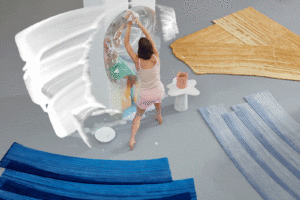
-
03 lines
The “Lines” performance shows the obsessive drawing of lines. The marks created by the performer with charcoal, are a nostalgic reminder of a childhood tradition of having your height marked on domestic walls. Past and present memories merge together in an excited gesture. Philippe Malouin’s “Lines” rugs were conceived by drawing with wax-crayons, the marks of which share the same imperfection typical of a freehand line drawn by a child.Philippe Malouin is a Canadian designer based in London. His diverse portfolio includes tables, rugs, chairs, lights, art objects and installations. This is his first collection for cc-tapis.Lines began through experimenting and sketching with wax crayons. Philippe Malouin instinctively traced parallel lines and focused on the irregularity created by the crayons. “I thought it might be interesting to try and replicate this irregularity in a rug.” The design evolved through trial and error with the final aesthetic being very much part of an experimental process. Working closely with art-director Daniele Lora, special Tibetan craftsmanship was combined with a clever “dip-dying” technique for coloring the Himalayan wool. The combination of which achieved the same imprecise feeling of the original drawings, irregular lines with soft and uneven tones. This irregularity is accentuated during production when one weaver takes over from another. Each weaver uses a different ball of yarn which results in a “glitch” in the design which starts to take a stylistic shape of its own, giving the same impression of when drawing with wax crayons. A particular feature which makes each rug completely unique from each another. The perfect mixture of vision, design and craftsmanship, Lines is a minimal yet essential collection of rugs with a very simple off-white and monochromatic color palette.
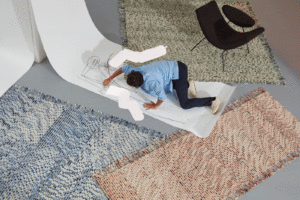
-
04 cultivate
The “Cultivate” performance stages a moment of play, an unusual game of battleships played with scissors. The useful everyday tool is utilized here in a light-hearted way to cut the threads of the rug. An illusory process of destruction, giving life to a surface and cultivating a sense of emotional attachment by the user to the rug. “Cutting becomes a process of creation instead of destruction” explains the designer Yuri Himuro. This playful interaction becomes the physical manifestation of change.Yuri Himuro is a Textile designer based in Tokyo, Japan. She designs textile objects with a special weaving system which encourages interaction with the user. Woven into the textiles are unexpected surprises designed to give joy and pleasure to the person interacting with the object.“Cutting becomes a process of creation instead of destruction,” explains textile designer Yuri Himuro of the inspiration behind her collection, Cultivate. Based on her innovative textile project Snip Snap — a jacquard pattern whose design only becomes apparent when the woven threads are snipped, revealing a double structure within the textile — Himuro explores the creative potential found in the act of cutting.
To create the rugs, cc-tapis translated Himuro’s novel jacquard weaving technique into an Indian flatweave. The nature of the design renders the rug infinitely customizable, allowing each owner to embrace the gesture of cutting, revealing colorful flatweave beneath the first layer of woolen threads. “The texture of each rug must be individually cultivated,” Himuro describes of her intention. The opportunity to personalize each rug, she believes, will bring joy to people and create a sense of emotional attachment towards their belongings.
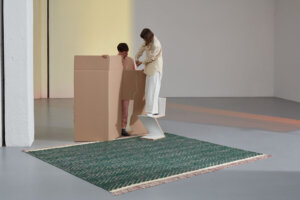
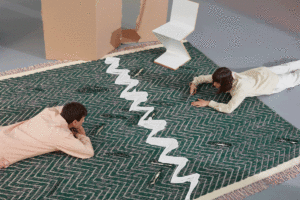
-
05 mindscape
The “Mindscape” performance depicts a never-ending renovation. The continuous movement of white boards, abstractly representative of furniture and walls, illustrates a tormented process of constant replacement, searching for an unreachable harmony. The starring rug, Mindscape by Mae Engelgeer, investigates spatial and architectural gestures: mirroring, splicing and replicating elements to achieve a new environment, a journey to another space.Mae Engelgeer is a textile designer based in Amsterdam, Holland. A master in materials and color, her work is where craft and fascination merge. This is her second collection for cc-tapis.Mae Engelgeer’s Mindscape collection investigates gesture in the digital realm, exploring spatial and architectural gestures. Engelgeer creates patterns from complex compositions, mirroring, splicing and replicating to achieve her otherworldly designs, taking the viewer on a journey to another space.
The Mindscape rugs imagine a tranquil space, an escape, a spiritual discovery and a staircase into another universe. The collection reveals a scene of an extraordinary combination of colors, a refined use of materials like wool, silk and linen. Different techniques are used to create depth and space to reveal a calm and synergetic dreamscape.
